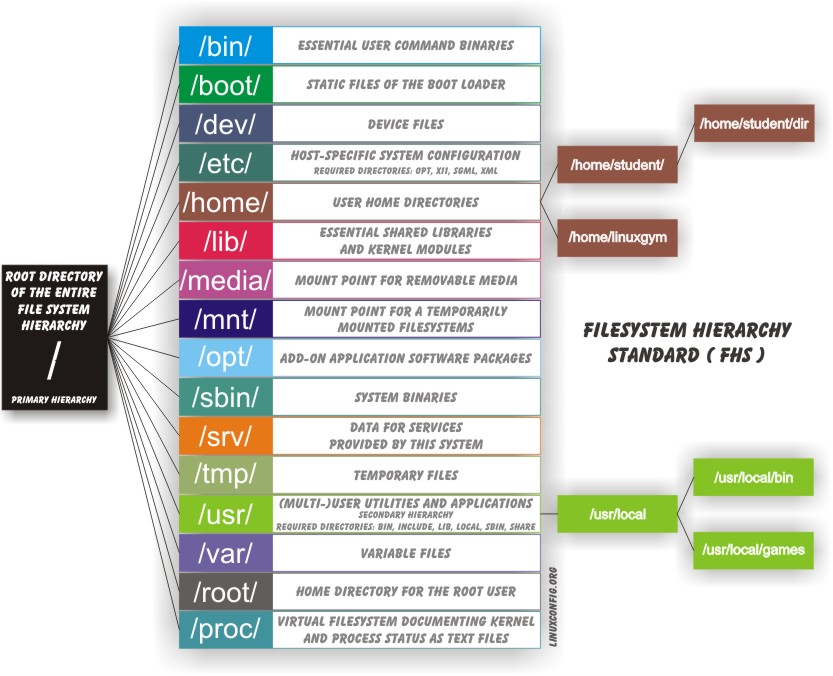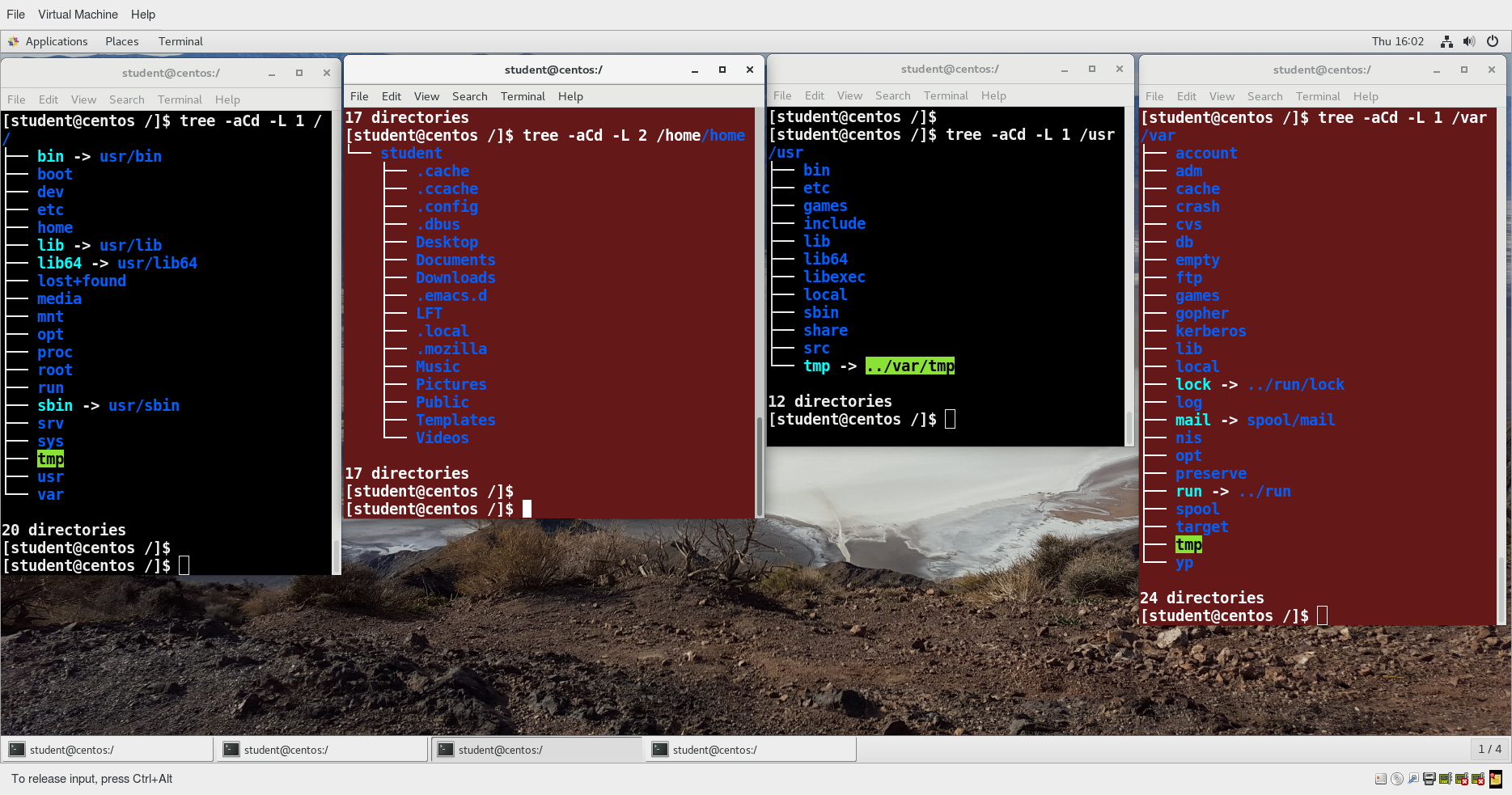3-4. Linux FileSystem Basics
Linux FileSystem
- Conventional disk filesystems: ext3, ext4, XFS, Btrfs, JFS, NTFS, vfat, exfat, etc.
- Flash storage filesystems: ubifs, jffs2, yaffs, etc.
- Database filesystems
- Special purpose filesystems: procfs, sysfs, tmpfs, squashfs, debugfs, fuse, etc.
Partitions and Filesystems
A partition is physically contiguous section of disk, or what appears to be so in some advanced setups.
A filesystem is a method of storing/finding files on the hard disk (usually in a partition).
One can think of a partition as a container in which a filesystem resides, although in some circumstances,
a filesystem can span more than one partition if one uses symbolic links, which we will discuss much later.
A comparison between filesystems in Windows and Linux is given in the accompanying table:
| Windows | Linux | |
|---|---|---|
| Partition | Disk1 | /dev/sda1 |
| Filesystem Type | NTFS/VFAT | EXT3/EXT4/XFS/BTRFS… |
| Mounting Parmeters | DriveLetter | MountPoint |
| Base Folder (where OS is stored) | C:\ | / |
The Filesystem Hierarchy Standard
Linux system store their important files according to a standard layout called the Filesystem Hierarchy Standard (FHS), Having a starndard is designed to ensure that users, administrators, and developers can move between distributions without having to re-learn how the system is organized.

More About the Filesystem Hierarchy Standard
All linux filesystem names are case-sensative.
